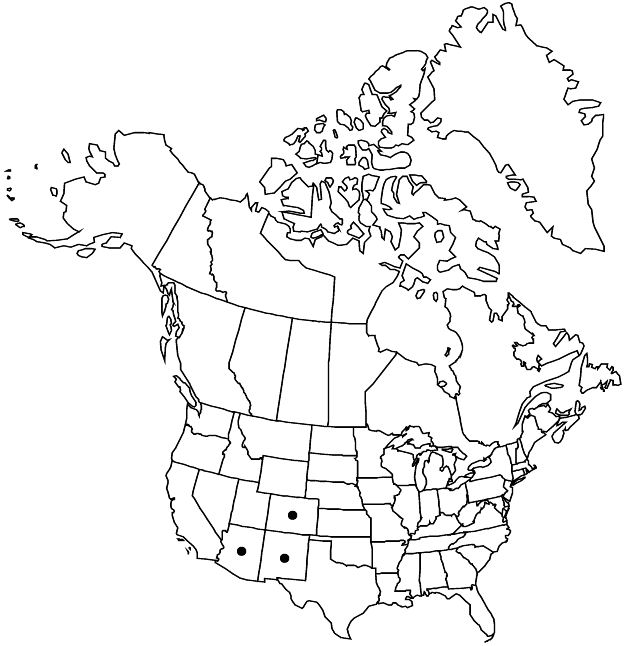Abutilon incanum
Hort. Brit., 53. 1826.
Subshrubs, 1–2 m. Stems erect, terete when young, minutely tomentulose. Leaves: stipules subulate, 3 mm; petiole ca. 1/2 times as long as blade; blade concolorous, ovate, to 6 cm, longer than wide, base cordate, margins irregularly serrulate or crenate, apex acute or acuminate, surfaces densely tomentulose, obscured by pubescence. Inflorescences solitary flowers or in open panicles. Flowers: calyx 3–5 mm, lobes not overlapping, spreading or somewhat reflexed in fruit, lanceolate-ovate; corolla reflexed, yellow or pink with dark red center, petals 4–6 mm; staminal column pubescent; style 5-branched. Schizocarps cask-shaped, not medially constricted, 7–9 × 6 mm; mericarps: apex acute or apiculate, surface tomentulose. Seeds 3 per mericarp, 2 mm, puberulent but appearing glabrous. 2n = 14.
Phenology: Flowering spring–fall.
Habitat: Open, arid habitats, hills and plains
Elevation: 0–1000 m
Distribution

Ariz., Colo., N.Mex., Mexico (Baja California, Sinaloa, Sonora), Pacific Islands (Hawaii).
Discussion
Abutilon incanum is found in Baja California, Sinaloa, Sonora, adjacent Arizona, and disjunctly in Hawaii, where it is considered to be native.
Selected References
None.